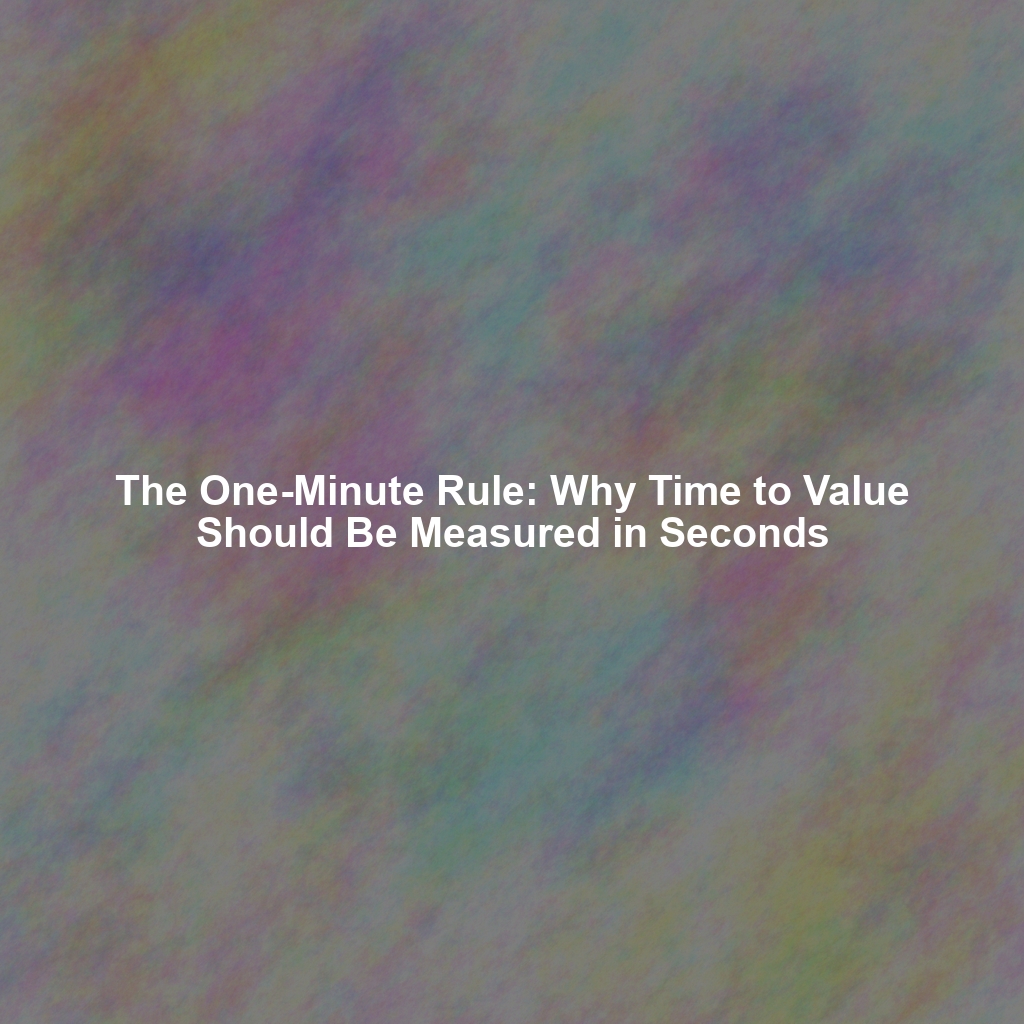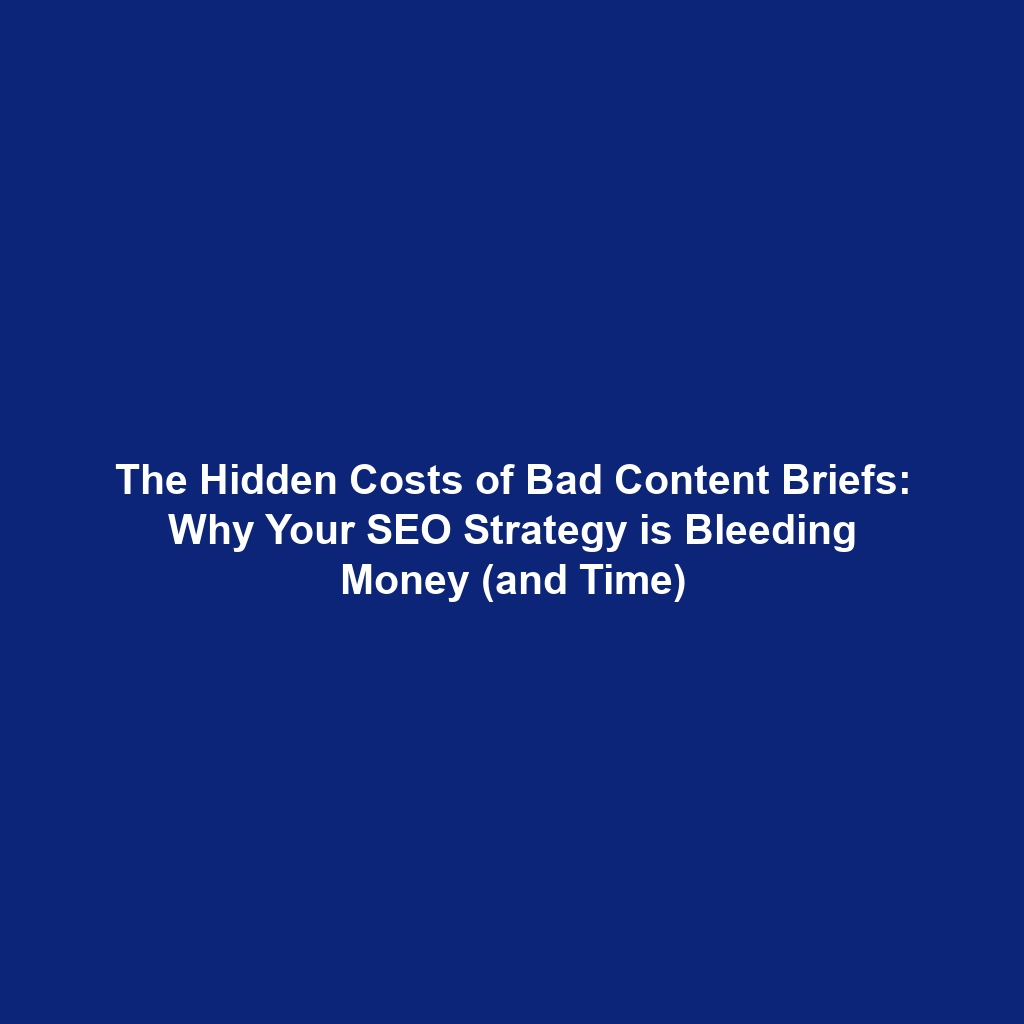⚡ The Modern User’s Patience Meter
In today’s instant-gratification world, you have approximately 60 seconds to prove your product’s worth. Miss this window, and you’ve likely lost a potential customer forever. Here’s how to master the art of immediate value delivery.
The average human attention span has dropped to just 8 seconds—shorter than a goldfish. But here’s what’s even more shocking: the average time it takes for a user to decide whether your product is worth their time is under one minute. I call this the “One-Minute Rule,” and it’s revolutionizing how I approach product design.
When launching Content Hurricane and Brief Buddy, I obsessed over a single metric: time to value after signup. The goal wasn’t just to get users to sign up—it was to get them to their first “aha moment” in under 60 seconds. The results? Both products achieved exactly that, with users experiencing meaningful value in less than a minute and requiring minimal button clicks or text reading.
🎯 What Is Time to Value (TTV)?
Time to Value is the duration between when a user first interacts with your product and when they achieve their first meaningful outcome. It’s not about completing onboarding or filling out profiles—it’s about solving a real problem or fulfilling a genuine need.
🔍 The Three Types of Time to Value
⚡ Immediate TTV (0-30 seconds)
User gets instant gratification or sees immediate results. Think Google search results or Instagram photo filters.
🚀 Short-term TTV (1-5 minutes)
User completes a meaningful task or achieves a small win. Most successful SaaS products aim for this.
⏰ Long-term TTV (Days/Weeks)
User realizes significant business impact. This is important for retention but too late for initial engagement.
The magic happens in that first category—immediate TTV. When users can see value within seconds, they’re immediately invested in exploring more. They’ve crossed the psychological threshold from skeptical visitor to engaged user.
📱 Case Study: Content Hurricane’s 45-Second Success Story
Content Hurricane is an AI-powered content creation tool, and I knew that in a crowded market, speed would be our differentiator. Here’s exactly how we achieved sub-minute time to value:
The Pre-Signup Hook (15 seconds)
Before users even create an account, they see a live demo right on the landing page. No “Request Demo” buttons, no sales calls, no waiting. They type in a topic, hit generate, and instantly see AI-created content. This preview gives them a taste of value before any commitment.
Key Insight: Don’t make users imagine the value—show them. A 15-second preview is worth a thousand feature descriptions.
The Signup Sprint (10 seconds)
Our signup process requires exactly three pieces of information: email, password, and company name. That’s it. No phone numbers, no company size dropdowns, no “How did you hear about us?” surveys. We collect additional data later, after they’ve experienced value.
The First Success (20 seconds)
Immediately after signup, users land on a page with a pre-filled content brief and a big “Generate Content” button. One click later, they’re looking at professional-quality content tailored to their industry. Total time from signup to first piece of content: under 45 seconds.
📊 The Results Speak Volumes
Average time to first content generation: 43 seconds
User activation rate: 87% (industry average: 23%)
Trial-to-paid conversion: 34% (industry average: 15%)
🎯 Brief Buddy: The Art of Instant Utility
Brief Buddy, our AI meeting summary tool, presented a different challenge. How do you demonstrate value for a tool that processes meeting recordings when new users don’t have recordings ready?
The solution was elegant in its simplicity: sample content. New users immediately see a demo meeting summary, complete with action items, key decisions, and participant insights. They can interact with it, edit it, and export it—experiencing the full product value without uploading anything.
The Three-Click Experience
From login to experiencing core functionality:
Click 1: “Try Demo Summary” button
Click 2: “Generate Action Items” button
Click 3: “Export Summary” button
In three clicks and roughly 30 seconds, users understand exactly what Brief Buddy does and how it will save them hours of manual work. No tutorials, no setup, no friction.
💡 The Sample Content Strategy
When your product requires user-generated content to demonstrate value, provide high-quality samples that showcase your best features. Let users experience the end result before they invest time in the process.
🧠 The Psychology Behind the One-Minute Rule
The One-Minute Rule isn’t arbitrary—it’s based on fundamental principles of human psychology and behavior:
The Commitment Escalation Principle
Once users invest time in your product (even just 30 seconds), they’re psychologically more likely to continue using it. It’s a form of the sunk cost fallacy working in your favor. But this only kicks in after they see initial value.
The Instant Gratification Bias
Humans are wired to prefer immediate rewards over delayed ones, even if the delayed rewards are larger. By providing instant value, you’re working with human nature, not against it.
🔬 The Neuroscience of First Impressions
7 seconds: Time to form a first impression
30 seconds: Decision window for continued engagement
60 seconds: Trust establishment threshold
90+ seconds: User switches to analytical thinking mode (harder to impress)
Your product needs to trigger positive emotional responses before users start overthinking.
⚡ The Cognitive Load Connection
The One-Minute Rule is intimately connected to stupid simplicity because cognitive load directly impacts time to value. Every decision point, every piece of unclear text, every confusing interface element adds seconds to your TTV.
Here’s how cognitive complexity destroys time to value:
Decision Paralysis: Too many options slow users down. Content Hurricane’s landing page has exactly one call-to-action: “Generate Content.” No competing messages, no decision fatigue.
Learning Curve: Custom terminology or unfamiliar patterns force users to learn before they can act. We use standard web conventions and familiar language everywhere.
Information Overload: Excessive text, tooltips, or explanations overwhelm users. Both products use minimal text and show value through action, not explanation.
🛠️ Building Your One-Minute Experience: The Implementation Framework
Creating a sub-minute time to value experience requires systematic thinking and ruthless prioritization. Here’s the framework I use:
🎯 The FAST Framework
F – Frictionless Entry
Remove every possible barrier to getting started. Minimize form fields, eliminate unnecessary steps, provide instant access.
A – Automatic Success
Engineer scenarios where users can’t fail to achieve initial value. Use smart defaults, sample data, or guided experiences.
S – Single Focus
Present one clear path to value. Resist the urge to showcase every feature. Save complexity for after the initial win.
T – Tangible Outcome
Ensure the first experience produces something concrete users can see, use, or share. Abstract benefits aren’t enough.
Step 1: Map Your Core Value Proposition
What’s the single most important problem your product solves? Everything in your first-minute experience should lead directly to demonstrating that solution. For Content Hurricane, it’s “create professional content instantly.” For Brief Buddy, it’s “turn meetings into actionable summaries effortlessly.”
Step 2: Identify Your Minimum Viable Experience (MVE)
What’s the smallest possible interaction that delivers genuine value? This isn’t your Minimum Viable Product—it’s the minimum experience that makes users say “wow, this actually works.”
Step 3: Count Every Click and Second
Literally time each step in your user journey. If something takes longer than expected, either simplify it or eliminate it. Remember: every second counts when you’re working within a one-minute window.
Pro Tip: Use session recordings to watch actual users navigate your product. You’ll be shocked at how much time is wasted on things you thought were obvious.
📈 Measuring and Optimizing Your One-Minute Experience
You can’t improve what you don’t measure. Here are the key metrics for tracking your time to value performance:
Time to First Value (TTFV): Average time from signup to first meaningful action
Activation Rate: Percentage of users who achieve first value within your target timeframe
Step Completion Rate: Percentage of users completing each step in your onboarding flow
Bounce Rate by Step: Where users abandon the experience
🎯 The One-Minute Challenge
Can a completely new user achieve meaningful value from your product in under 60 seconds? If not, you’re losing potential customers every day. The companies that master the One-Minute Rule don’t just survive in today’s attention economy—they dominate it.
Remember: in a world of infinite choices and shrinking attention spans, speed isn’t just a nice-to-have—it’s a competitive advantage. The One-Minute Rule isn’t about rushing users through your product; it’s about respecting their time enough to prove your worth immediately.
Start timing your user experience today. You might be surprised by what you discover—and excited by the opportunities for improvement.


